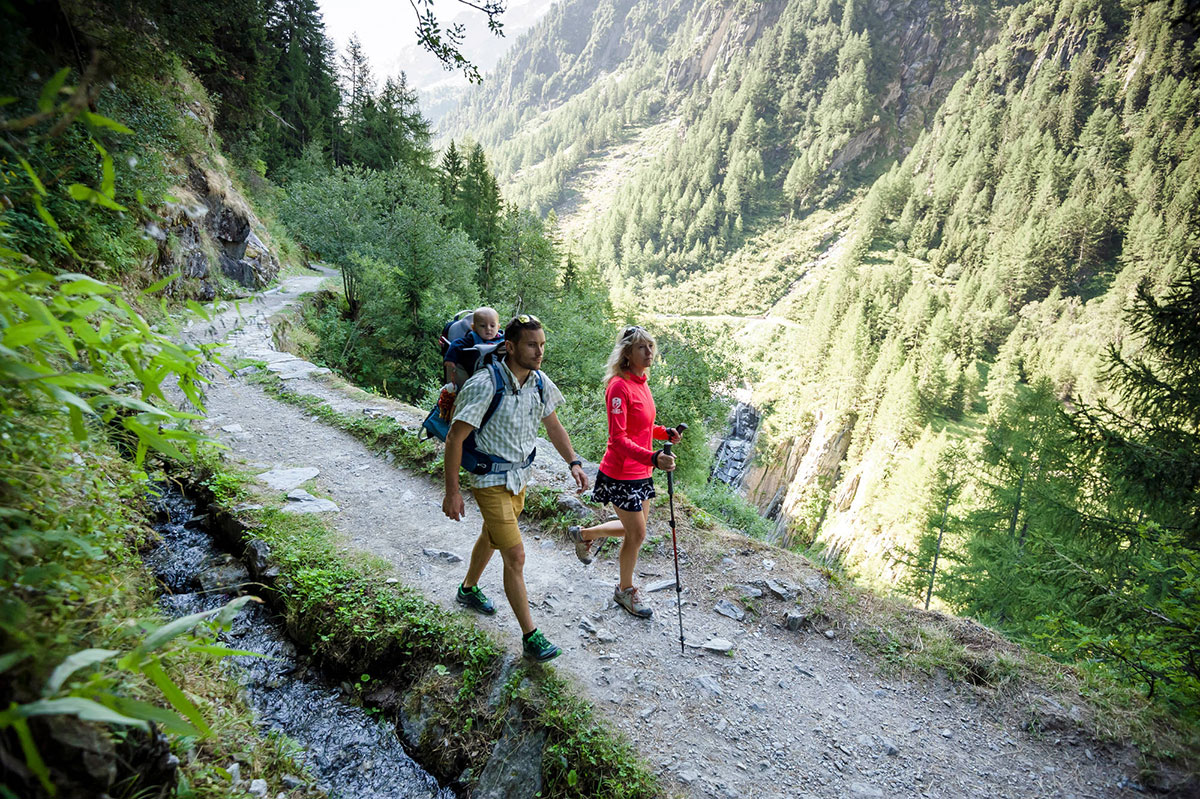Summer is here and that attracts many hiking enthusiasts back to the mountains. But the mountain sport comes with its own dangers. The wrong equipment, lack of fitness and ability, emerging tiredness or a change in the weather are the fate of many mountaineers. In the following we will explain the biggest dangers of hiking in the mountains and offer you helpful tips and tricks.
Danger when hiking Nr. 1: Wrong equipment
The wrong or missing equipment quickly leads to devastating accidents. The most important thing when hiking is first of all the mountain shoe. This needs a good profile and must be the right size. If this is not given, the risk of stumbling or slipping increases.
In principle, the motto when choosing equipment is: as much as necessary, as little as possible. The less weight the hiking backpack has, the less energy you need to carry the equipment.
However, always make sure you don’t give up important equipment just to save weight. It is best to go through the route step by step to find out what clothes and tools you need.
You definitely need the following things:
- Hiking boots
- Baselayers
- Outdoor pants
- Windbreaker or Softshell jacket
- Rain jacket
- Backpack
- Drinking bottles and hiking food
- Hiking map
But also the correct handling of the equipment must be skillful. This is particularly evident, for example, with climbing equipment. Anyone who carries a via ferrata set but does not know how to use it quickly makes serious mistakes.

Danger when hiking Nr. 2: Overconfidence
The greatest danger on the mountain is man himself. Many accidents happen because of overestimating one’s own fitness and ability. Beginners suddenly end up in terrain for professional hikers and aren’t up to the challenge. One misstep can already lead to big accidents here.
It is therefore important that you are aware of how fit you are and how much mountaineering experience you already have. If you overestimate yourself, you are putting yourself in unnecessary danger. Speaking of fitness, make sure you don’t set the bar too high for the first hike of the year. Give your body time to get used to this kind of effort again.
It becomes even more difficult when you are hiking in a group. Here it is important to note that the degree of difficulty of the route always depends on the weakest link. It is important that everyone plays with an open hand. There is no point in playing the brave and then realizing during the route that you aren’t fit enough. This quickly puts the whole group in danger.
It is also recommended to take out an accident insurance online. That way you are at least financially secured in case of an emergency.
Danger when hiking Nr. 3: Tiredness and exhaustion
Your reaction time slows down and your concentration decreases. This can only mean one thing: You are tired and urgently need a break! When you are in the mountains, it is important to take regular breaks.
Drink something and treat yourself to a snack to replenish your energy reserves. In addition, a break or two gives you the ideal opportunity to take some time out and enjoy the beautiful landscape around you.
Most hikers get tired especially on the descent. The strenuous ascent has pushed your body to its limits, you are exhausted and just want to get home quickly. But here you have to be careful, because often the descent is more dangerous than the ascent. The increasing tiredness makes you careless and then even bigger stones or roots can become your downfall and you stumble.
Therefore, make sure to divide your strength reserves well. Better a break than a tragic accident!
Danger when hiking Nr. 4: weather change
Every now and then, the best preparation doesn’t help and the weather will put a damper on your plans. Temperature drops, rain and lightning are the biggest dangers.
Often underestimated, however, is emerging fog. It makes visibility considerably more difficult. Path markings are hardly recognizable anymore, which increases the danger of getting lost. Stumbling blocks along the path are even easier to overlook and there is an increased risk of falling.
Be sure to inform yourself about the weather situation before you start. Adjust the route accordingly or postpone the tour to another day. During the hike you should always keep an eye on the weather and if necessary stop the tour early or choose another route.
If you are in the high mountains and a thunderstorm is coming, you have no choice but to seek shelter and wait. If there is no shelter or similar in the vicinity, this means concretely:
- leave exposed areas
- leave the via ferrata – steel ropes are lightning magnets
- find a free area, hollow or rock niche
- remove metal equipment from the body
- go to squatting position on an isolated base and wait
Conclusion: Planning is the key when hiking
To make your trip to the mountains a great experience, there are a few things to consider. Careful planning is an absolute must. The following questions will help you to plan a successful trip into the mountains:
- How fit am I?
- What distance do I have to cover?
- How many vertical meters are to be covered?
- How long will I be on the road?
- Are there refuges or other shelters?
- Which weather is announced?
- What equipment do I need?

